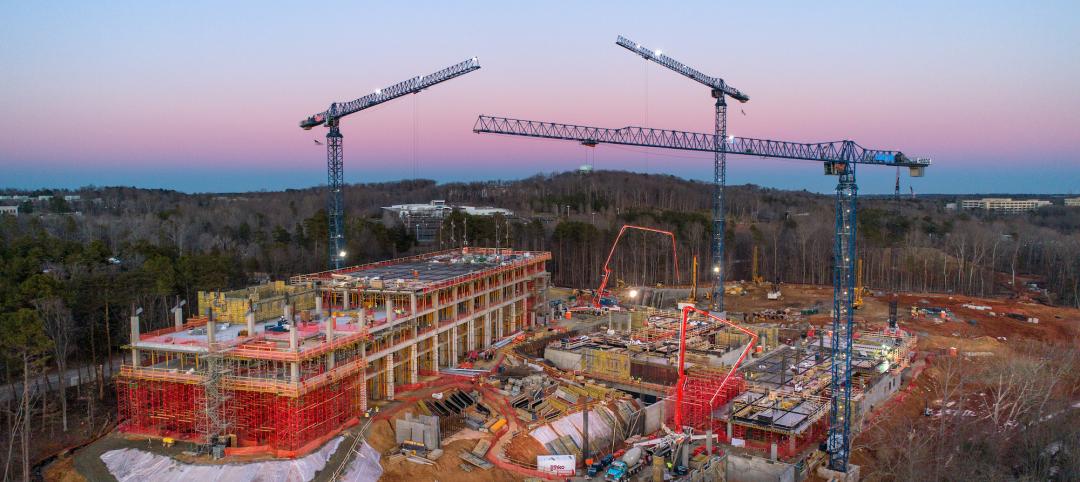Low-emissivity (low-e) glasses are critical to making today’s buildings brighter, more energy-efficient and more sustainable. By controlling solar heat gain and promoting daylighting, they help buildings use less energy for temperature control and lighting, while adding the human benefits associated with outdoor views and more pleasant working and living environments.
Here are five tips to help architects, engineers, and contractors understand and explain the differences among low-e glasses and their impact on building performance:
1. E = Emissivity. Emissivity refers to the relative ability of a material’s surface to radiate energy. Low-e glass has a microscopically thin coating that lowers the emissivity of the glass surface and is engineered to transmit energy from the visible light portion of the solar spectrum (between 380 and 780 nanometers), while reflecting energy from ultraviolet light (310 to 380 nanometers), which causes fading, and infrared light (above 780 nanometers), which makes buildings warmer.
2. Think of a thermos. A thermos works by using a silver lining to continuously reflect and maintain the temperature of the drink it contains. Low-e glasses function according to the same principal, using multiple layers of silver or other low-emissivity materials in the coating to keep heat inside a building or prevent it from entering. Similarly, thermoses and insulating glass units (IGUs) are both designed with air spaces that provide a layer of insulation between the inside and outside.
3. More slivers of silver. Low-e coatings incorporate multiple layers of silver (or other low- emissivity materials) to control the transmission and reflection of heat and light. Recent technical advances now enable glass manufacturers to deposit up to three layers of silver on the glass substrate, which has enhanced the solar control capability of low-e glasses without diminishing their ability to transmit light.
4. Passive for insulation. Passive low-e glasses are usually made using the pyrolitic process, which means the coating is applied while the molten glass ribbon is still on the float line. This produces a “hard” coat that is fused to the glass surface and highly durable, but which has a higher emissivity that a solar-control low-e glass. Passive low-e glasses have decent insulating capabilities, but because of the limitations of metal deposition on the float line, they permit more solar infrared energy (heat) to pass through their coatings and become trapped inside the building. Consequently, passive low-e glasses are often the best choice for cold, heating-dominated climates.
5. Solar control to reduce heat gain. Coatings for solar control, low-e glasses are applied to pre-cut sheets of glass in a vacuum chamber at room temperature. This gives glass manufacturers the ability to deposit more sophisticated coatings (with multiple layers of silver) on the glass substrate, which improves solar control of the infrared (heat) portion of the solar spectrum without substantially diminishing the transmittance of visible light. These coatings are the best choice for hot, cooling-dominated (and moderate) climates. The lower emissivity of solar control low-e glasses also provides better insulating values to maintain the interior temperatures.
To learn more about low-e glass and other topics related to designing, specifying and building with glass, visit the PPG Glass Education Center at http://educationcenter.ppg.
Related Stories
Giants 400 | Dec 5, 2021
2021 Justice Facility Sector Giants: Top architecture, engineering, and construction firms in the U.S. justice facility/public safety sector
Turner Construction, DLR Group, AECOM, and Stantec top BD+C's rankings of the nation's largest architecture, engineering, and construction firms for justice facility/public safety buildings work, including correctional facilities, fire stations, jails, police stations, and prisons, as reported in the 2021 Giants 400 Report.
Giants 400 | Dec 3, 2021
2021 Hotel Sector Giants: Top architecture, engineering, and construction firms in the U.S. hospitality sector
Gensler, Jacobs, Suffolk Construction, and WATG top BD+C's rankings of the nation's largest hotel sector architecture, engineering, and construction firms, as reported in the 2021 Giants 400 Report.
Architects | Nov 29, 2021
LRK Names Tony Pellicciotti ‘Managing Principal’ of firm
Pellicciotti is one of LRK’s fourteen principals representing its markets in Memphis, Dallas, Philadelphia, Orlando/Celebration, New Orleans, Baton Rouge, Little Rock, and Princeton.
Architects | Nov 23, 2021
HMC names new Director of Design
James Krueger will oversee design and lead strategies to improve the impact of HMC’s work.
Giants 400 | Nov 20, 2021
2021 Parking Structure Giants: Top architecture, engineering, and construction firms in the U.S. parking structure sector
PGAL, PCL Construction, and Wiss, Janney, Elstner Associates top BD+C's rankings of the nation's largest parking structure sector architecture, engineering, and construction firms, as reported in the 2021 Giants 400 Report.
Giants 400 | Nov 20, 2021
Top 100 Design-Build Construction Firms for 2021
Clayco, Hensel Phelps, ARCO Construction Companies, Swinerton, and Ryan Companies US top the rankings of the nation's largest design-build construction firms for buildings construction work, according to BD+C's 2021 Giants 400 Report.
Giants 400 | Nov 19, 2021
2021 Cultural Facilities Giants: Top architecture, engineering, and construction firms in the U.S. cultural facilities sector
Gensler, AECOM, Buro Happold, and Arup top BD+C's rankings of the nation's largest cultural facilities sector architecture, engineering, and construction firms, as reported in the 2021 Giants 400 Report.
Giants 400 | Nov 19, 2021
2021 Convention Center Sector Giants: Top architecture, engineering, and construction firms in the U.S. convention and conference facilities sector
Populous, KPFF, Lendlease, and Turner Construction top BD+C's rankings of the nation's largest convention and conference facilities architecture, engineering, and construction firms, as reported in the 2021 Giants 400 Report.
Giants 400 | Nov 18, 2021
2021 Multifamily Sector Giants: Top architecture, engineering, and construction firms in the U.S. multifamily building sector
Clark Group, Humphreys and Partners, and Kimley-Horn head BD+C's rankings of the nation's largest multifamily building sector architecture, engineering, and construction firms, as reported in the 2021 Giants 400 Report.
Laboratories | Nov 18, 2021
Tapping into the life sciences building boom
Paul Ferro of Form4 Architecture discusses how developers are pivoting to the life sciences sector, and what that means for construction and adaptive reuse.


















